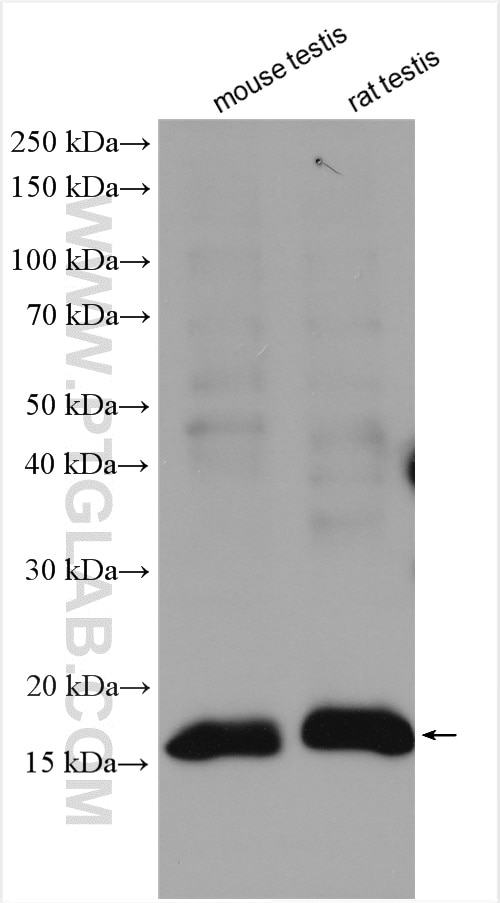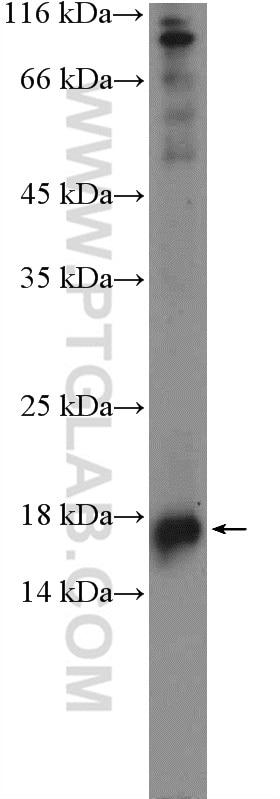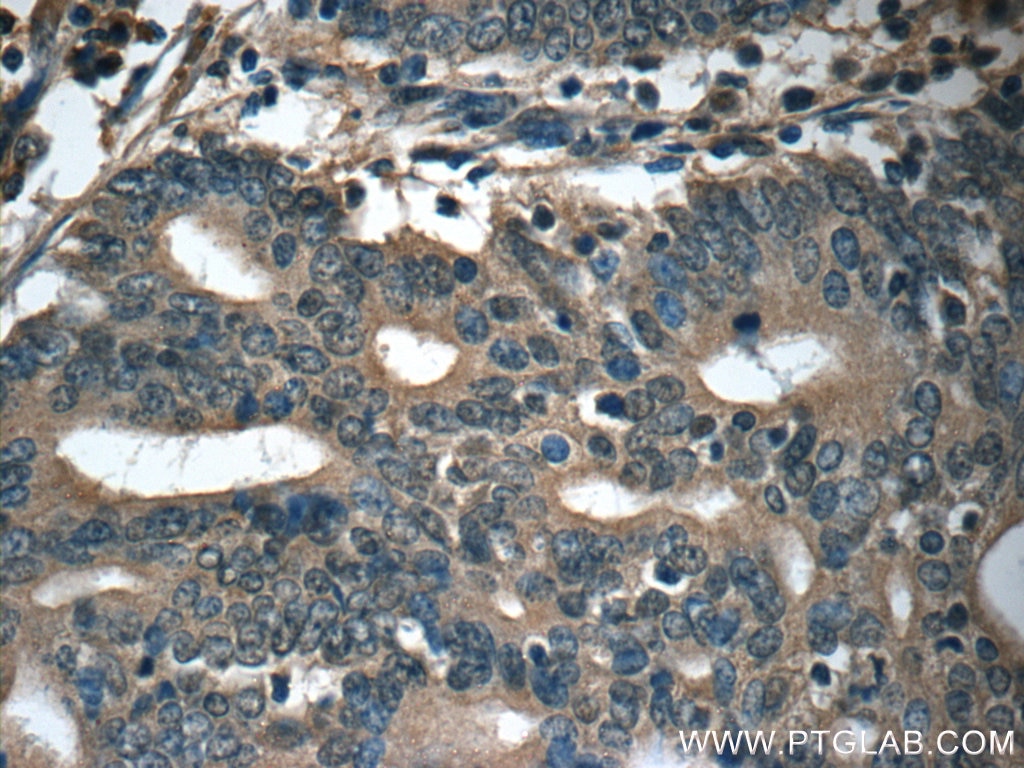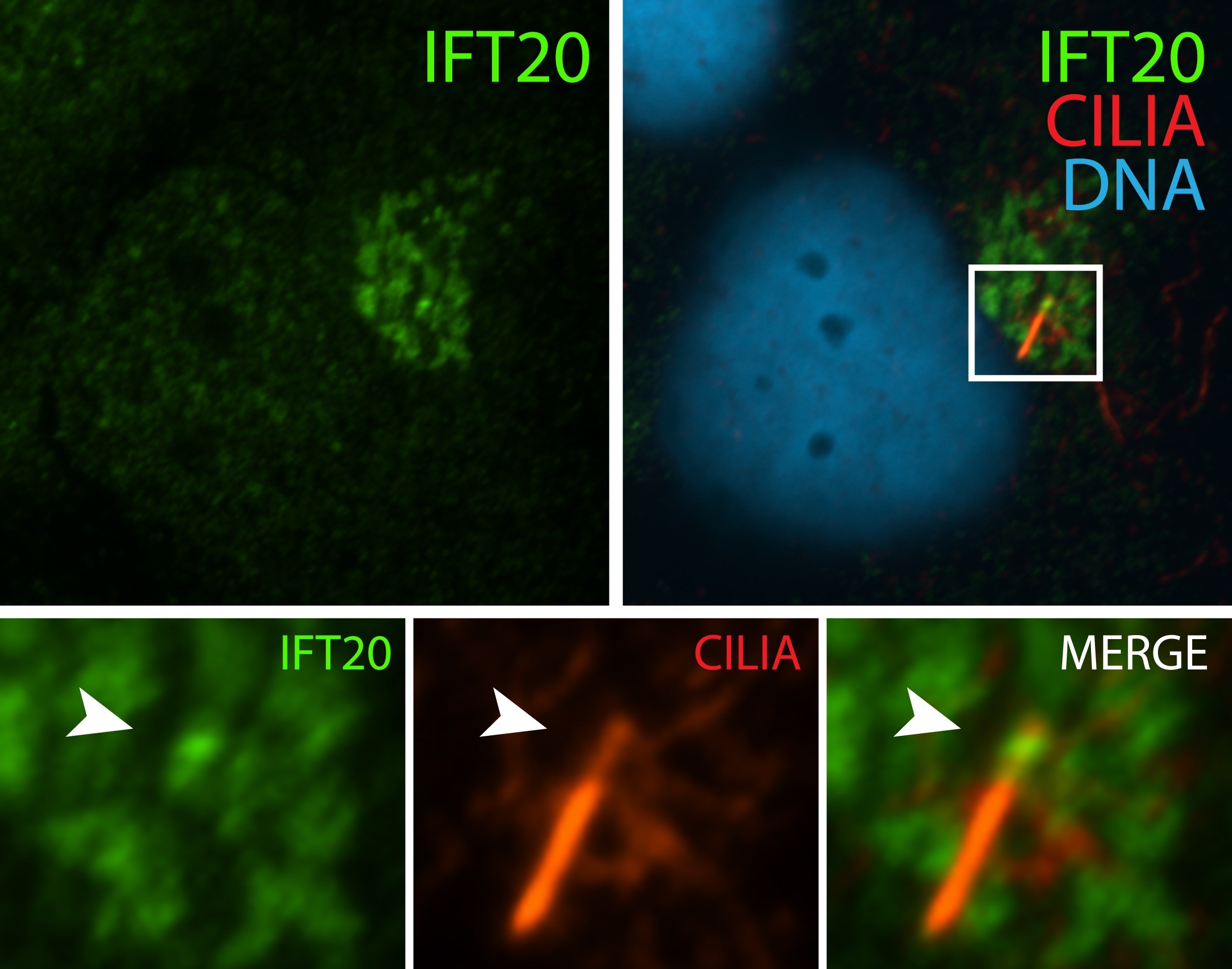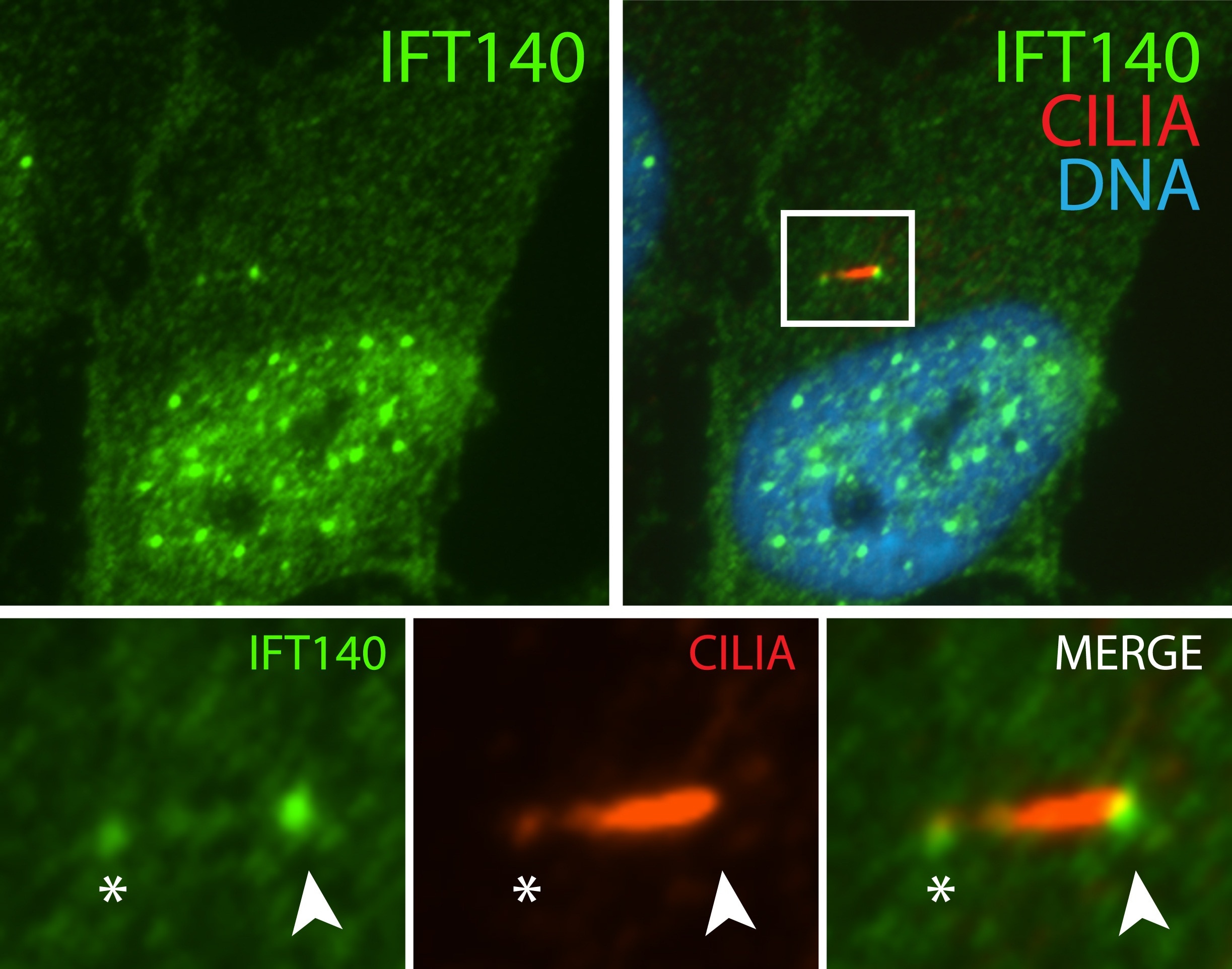- Phare
- Validé par KD/KO
Anticorps Polyclonal de lapin anti-IFT20
IFT20 Polyclonal Antibody for WB, IP, IF, IHC, ELISA
Hôte / Isotype
Lapin / IgG
Réactivité testée
canin, Humain, rat, souris et plus (1)
Applications
WB, IHC, IF/ICC, IP, CoIP, ELISA
Conjugaison
Non conjugué
N° de cat : 13615-1-AP
Synonymes
Galerie de données de validation
Applications testées
| Résultats positifs en WB | cellules HEK-293, cellules MDCK, tissu testiculaire de rat, tissu testiculaire de souris |
| Résultats positifs en IP | tissu testiculaire de souris |
| Résultats positifs en IHC | tissu de cancer de l'endomètre humain il est suggéré de démasquer l'antigène avec un tampon de TE buffer pH 9.0; (*) À défaut, 'le démasquage de l'antigène peut être 'effectué avec un tampon citrate pH 6,0. |
| Résultats positifs en IF/ICC | cellules hTERT-RPE1, cellules MDCK |
Dilution recommandée
| Application | Dilution |
|---|---|
| Western Blot (WB) | WB : 1:300-1:800 |
| Immunoprécipitation (IP) | IP : 0.5-4.0 ug for 1.0-3.0 mg of total protein lysate |
| Immunohistochimie (IHC) | IHC : 1:20-1:200 |
| Immunofluorescence (IF)/ICC | IF/ICC : 1:20-1:200 |
| It is recommended that this reagent should be titrated in each testing system to obtain optimal results. | |
| Sample-dependent, check data in validation data gallery | |
Informations sur le produit
13615-1-AP cible IFT20 dans les applications de WB, IHC, IF/ICC, IP, CoIP, ELISA et montre une réactivité avec des échantillons canin, Humain, rat, souris
| Réactivité | canin, Humain, rat, souris |
| Réactivité citée | rat, canin, Humain, poisson-zèbre, souris |
| Hôte / Isotype | Lapin / IgG |
| Clonalité | Polyclonal |
| Type | Anticorps |
| Immunogène | IFT20 Protéine recombinante Ag4521 |
| Nom complet | intraflagellar transport 20 homolog (Chlamydomonas) |
| Masse moléculaire calculée | 15 kDa |
| Poids moléculaire observé | 15-18 kDa |
| Numéro d’acquisition GenBank | BC038094 |
| Symbole du gène | IFT20 |
| Identification du gène (NCBI) | 90410 |
| Conjugaison | Non conjugué |
| Forme | Liquide |
| Méthode de purification | Purification par affinité contre l'antigène |
| Tampon de stockage | PBS avec azoture de sodium à 0,02 % et glycérol à 50 % pH 7,3 |
| Conditions de stockage | Stocker à -20°C. Stable pendant un an après l'expédition. L'aliquotage n'est pas nécessaire pour le stockage à -20oC Les 20ul contiennent 0,1% de BSA. |
Informations générales
Intraflagellar transport (IFT), mediated by molecular motors and IFT particles, is an important transport process that occurs in the cilium. IFT particles are multi-subunit complexes that are made up of complex A and complex B. IFT20 is a component of IFT complex B and involved in ciliary process assembly. It is associated with the Golgi complex and plays a role in the trafficking of ciliary membrane proteins from the Golgi complex to the cilium.
Protocole
| Product Specific Protocols | |
|---|---|
| WB protocol for IFT20 antibody 13615-1-AP | Download protocol |
| IHC protocol for IFT20 antibody 13615-1-AP | Download protocol |
| IF protocol for IFT20 antibody 13615-1-AP | Download protocol |
| IP protocol for IFT20 antibody 13615-1-AP | Download protocol |
| Standard Protocols | |
|---|---|
| Click here to view our Standard Protocols |
Publications
| Species | Application | Title |
|---|---|---|
Nat Cell Biol Early steps in primary cilium assembly require EHD1/EHD3-dependent ciliary vesicle formation. | ||
Nat Cell Biol Early steps in primary cilium assembly require EHD1/EHD3-dependent ciliary vesicle formation. | ||
Sci Adv An EMT-primary cilium-GLIS2 signaling axis regulates mammogenesis and claudin-low breast tumorigenesis. | ||
Nat Commun Microtubule asters anchored by FSD1 control axoneme assembly and ciliogenesis. | ||
Proc Natl Acad Sci U S A EMT programs promote basal mammary stem cell and tumor-initiating cell stemness by inducing primary ciliogenesis and Hedgehog signaling.
|
Avis
The reviews below have been submitted by verified Proteintech customers who received an incentive forproviding their feedback.
FH Charlotte (Verified Customer) (07-18-2024) | I did the standard iF protocol on the classic LIGHT2 cells used to study Hh signalling that depends on the primary cilia: PFA 4% 10 min cold methanol 5 min 1h in 1% BSA in PBST 1/150 in blocking solution, O.N. at 4°C 5*5min PBST 1/500 in blocking solution, 1h at RT° 4*5min PBST + 5min PBS I'm not convinced as the background is super dotty and quite important. Maybe the conditions must be optimized but it doesn't look promising
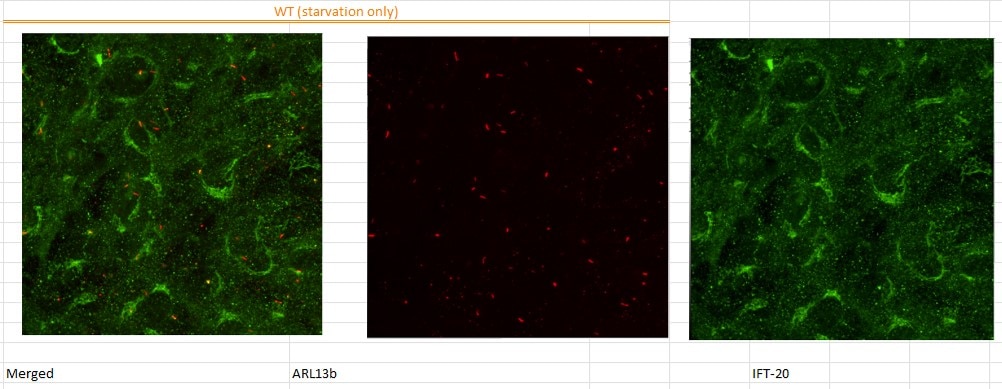 |
FH kes (Verified Customer) (01-17-2022) | I used it for WB(1:1000) and IF for cilia (1:200) and got good results.
|
FH Boyan (Verified Customer) (03-15-2019) | Excellent for IF labelling of the Golgi under PFA fixation.
|

